As you might expect, boar hunting is run with great precision in Germany, so set yourself up for success (and avoid any howlers!) with Alex Hatton’s beginner’s guide to boar hunting; including tips on etiquette and technique!
Hunting in the British Isles can at best be described as ‘relaxed’ in comparison to the fast pace of German driven boar shooting. Whilst all German hunters will have passed an extensive course and gained their hunting licence, which covers every aspect of how they work from the laws to the ceremonies, a Brit visiting with just a DSC qualification can soon feel a little overwhelmed.
Made up of my own notes that have helped me over the years, this beginner’s guide will help equip you with a base of knowledge to help you avoid a hunting faux pas that could land you in deep water. Once you are dropped in that stand with no phone signal, you really do need to know the dos and don’ts of boar hunting!
The first lesson I was taught was that a driven boar hunt in Germany, conducted out of fences, is nothing like you see in the many wild boar DVDs that circulate in our community. These are filmed over many seasons and are highly edited. Unless you are lucky and end up in the hot seat, you need to make sure you make every opportunity count. If you are lucky, you will get one good chance on a driven hunt, so make sure it counts.
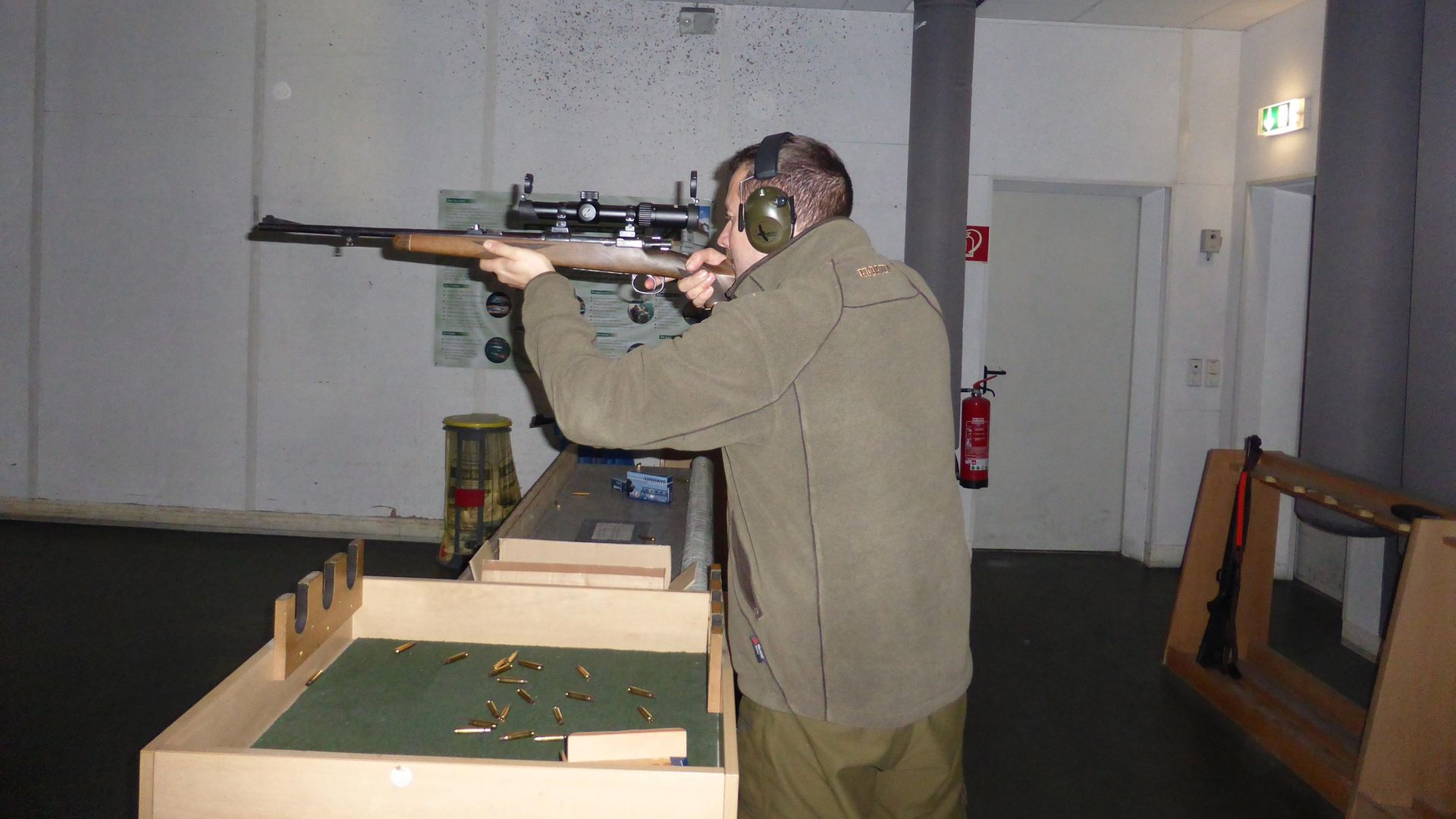 credit: Archant
credit: Archant
Practice running boar before your hunt
This may sound obvious, but practice is essential if you want to successfully shoot a moving animal with a rifle. It is amazing how many do not practise at all before a trip, and then wonder why they missed. It is simply not something we do with deer here; we always wait for a static animal before shooting. Although it helps, shooting birds with a shotgun is vastly different to shooting moving boar with a rifle; a rifle bullet is travelling infinitely faster than shotgun pellets and, unlike a shotgun, you will need to do a little more aiming.
There are some shooting grounds offering moving boar targets dotted around the UK. Alternatively, you could mock something up. YouTube has an array of contraptions people have put together to practise for driven boar, ranging from a moving paper target to shooting a barrel as it rolls down a grass bank. Germany has some great ‘shooting cinemas’ dotted around the place, which we have always made a beeline for to practise on a variety of moving targets as well as to improve quarry identification.
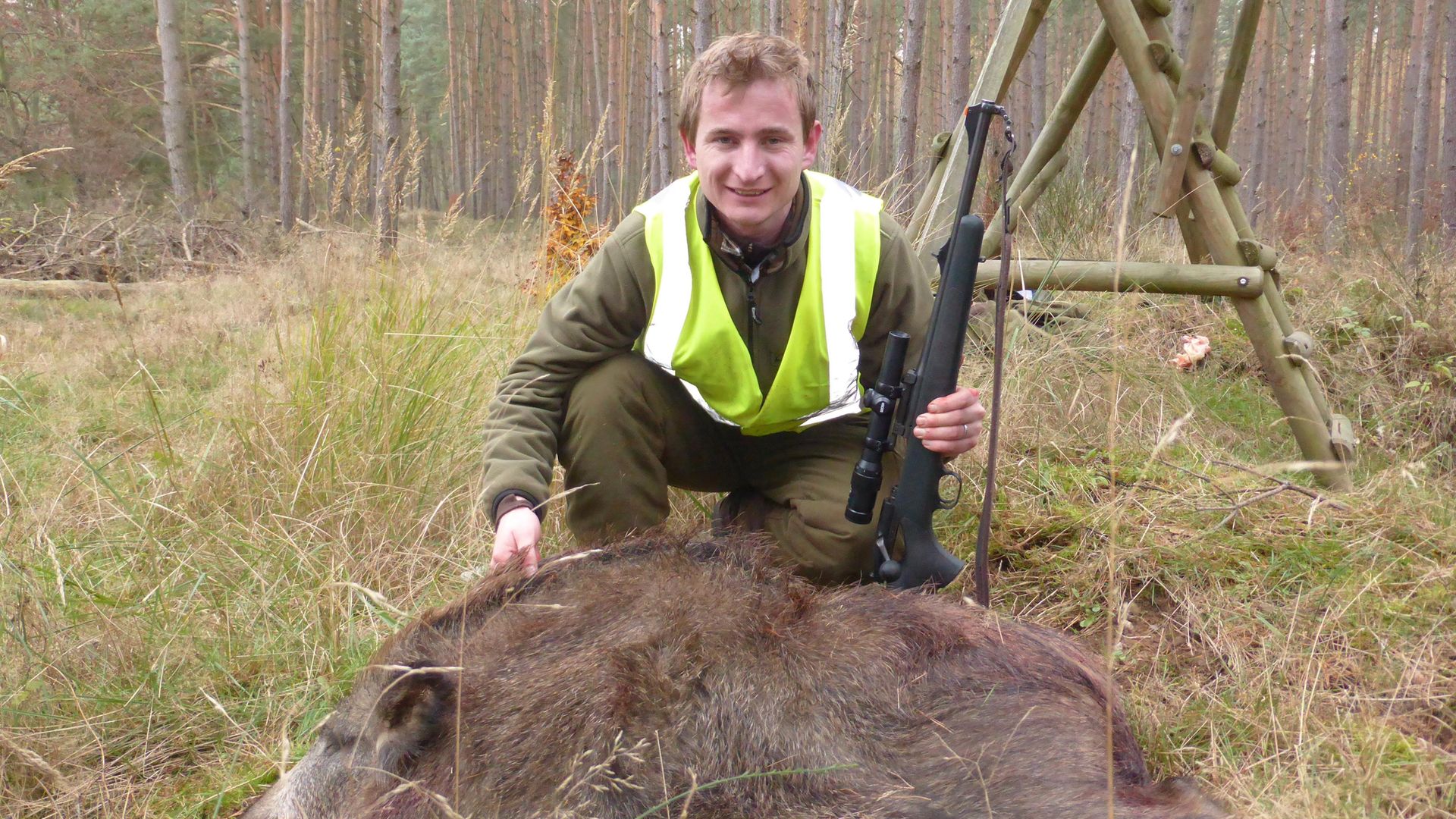 credit: Archant
credit: Archant
What type of rifle and scope do you need for running boar?
It will vary from place to place, but check in advance with your host about what calibre you are allowed to use. There are restrictions on what calibres are legal, and some grounds may have their own policies too. Also check if lead is allowed – the last time I was in Germany, the government had banned lead on their estate, but it was allowed on private estates.
On the subject of scopes, although many hunting scopes can do a massive range of magnification, the field of view on these scopes is poor, and it really does pay dividends to go with a scope with a wide field of view, such as a 1-4x24. I particularly like a red dot to focus the eye a little more.
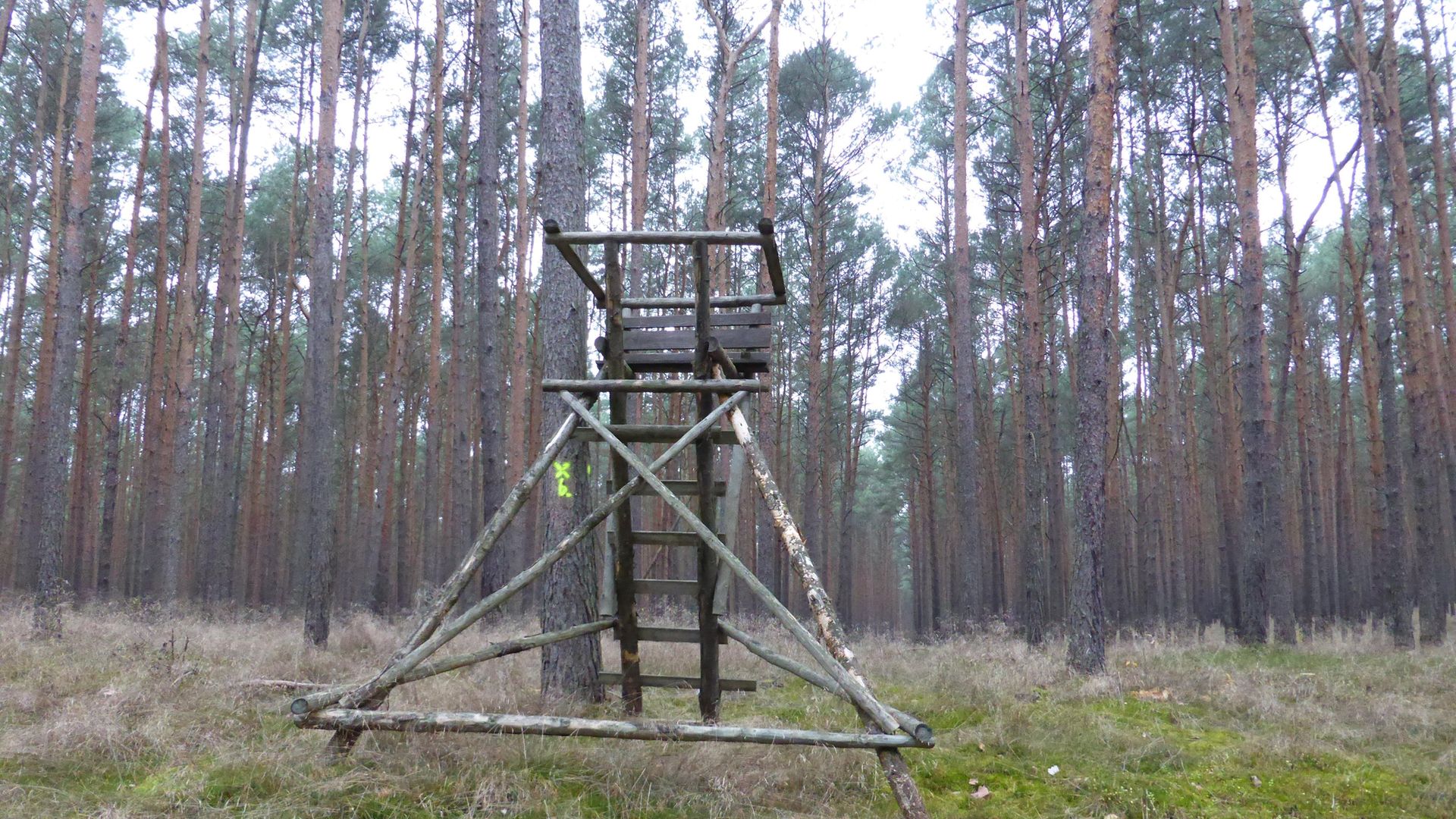 credit: Archant
credit: Archant
Safety tips for driven boar hunting
The driven hunts I have been to have been so well organised there is no guesswork. Each numbered stand has been positioned to maximise the chance of the hunters achieving a good cull and to keep the animals moving. But it is also designed with safety being paramount.
On a few stands I have been lucky enough to stand in, surrounded by up to 100 other hunters, there has been an ‘X’ in bright orange or a ‘!’ on trees in front of me, indicating a safe shooting zone. You will generally be told how far you can shoot at a given stand, but 50m is fairly standard for running animals.
Although Germany initially resisted the compulsory wearing of blaze orange for hunting, they have now embraced it to such an extent that it is the law for it to be worn. A vest, hat bands and strips of orange here and there all add to your safety, and must be worn throughout the hunt.
The instructions are often very strict. You will be dropped off at your stand and picked up from it at the end. Unless there is a gralloching break, stay seated and keep an eye on the time. Although you will very likely be ‘live’ from the moment you are seated, there will be a strict finishing time to allow for people to leave stands and for the dog’s tracking work to start.
With meat hygiene paramount (and depending on the weather), there may be a mid-hunt gralloch break. At a set time, you will be allowed to leave your stand and gralloch those animals you know are dead. It usually lasts around 15 minutes, and you must not shoot during this time. If you suspect something is injured, it must be left.
It may seem obvious, but I set an alarm on my watch a few minutes before I am due back in my seat. My experience has taught me that not everyone’s watch is synched, so I’d advise getting back in good time!
There is a change in the way many driven hunts operate in Germany. In the past, a team of beaters would be used to push areas; now, the beaters tend to be part of the hunters’ group, and are posted at a stand whilst their dogs work in big circles around the area.
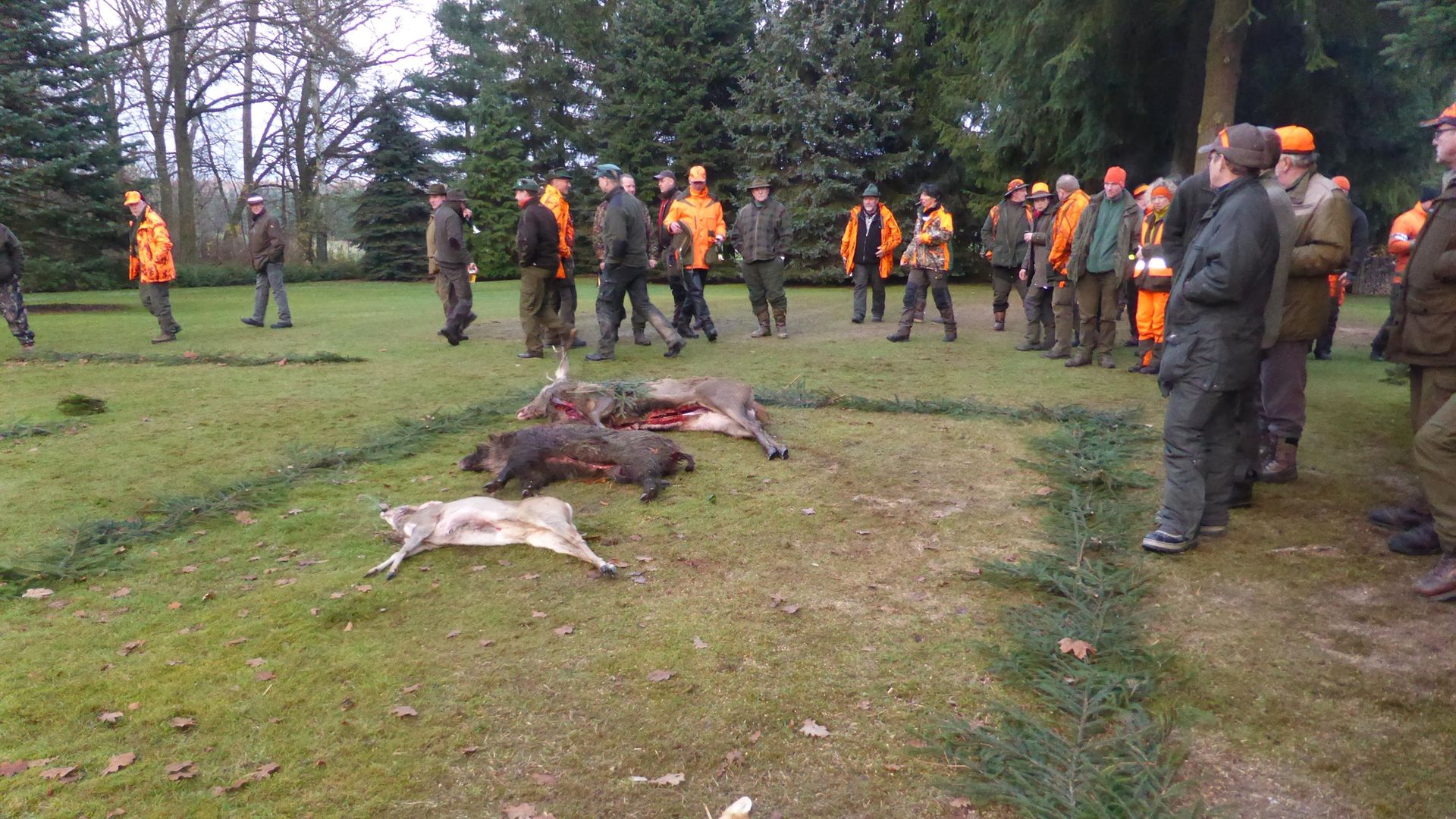 credit: Archant
credit: Archant
Expect the unexpected on a boar hunt!
I cannot express enough the need to expect the unexpected! I have relived this story once in Rifle Shooter, but think it really illustrates this point well.
On the fifth day of a great trip, there were still no boar to boot for me – but plenty of deer. I climbed up to my stand, and, instead of doing what I had done for the previous four days, I did not load the rifle. Instead, I perched on the top of the stand and relieved myself, taking care not to wet my seating area. In full flow, a set of ears popped up out of the long grass not 30 metres from where I stood. Then another set and another, until a complete sounder of boar was up and looking straight at me. I reached for my rifle and managed to get a single round into it, but it ended up being a tricky shot, as the sow rounded them up and they went off at some pace. I still cannot remember to this day if I managed to zip up before making that shot, so be ready!
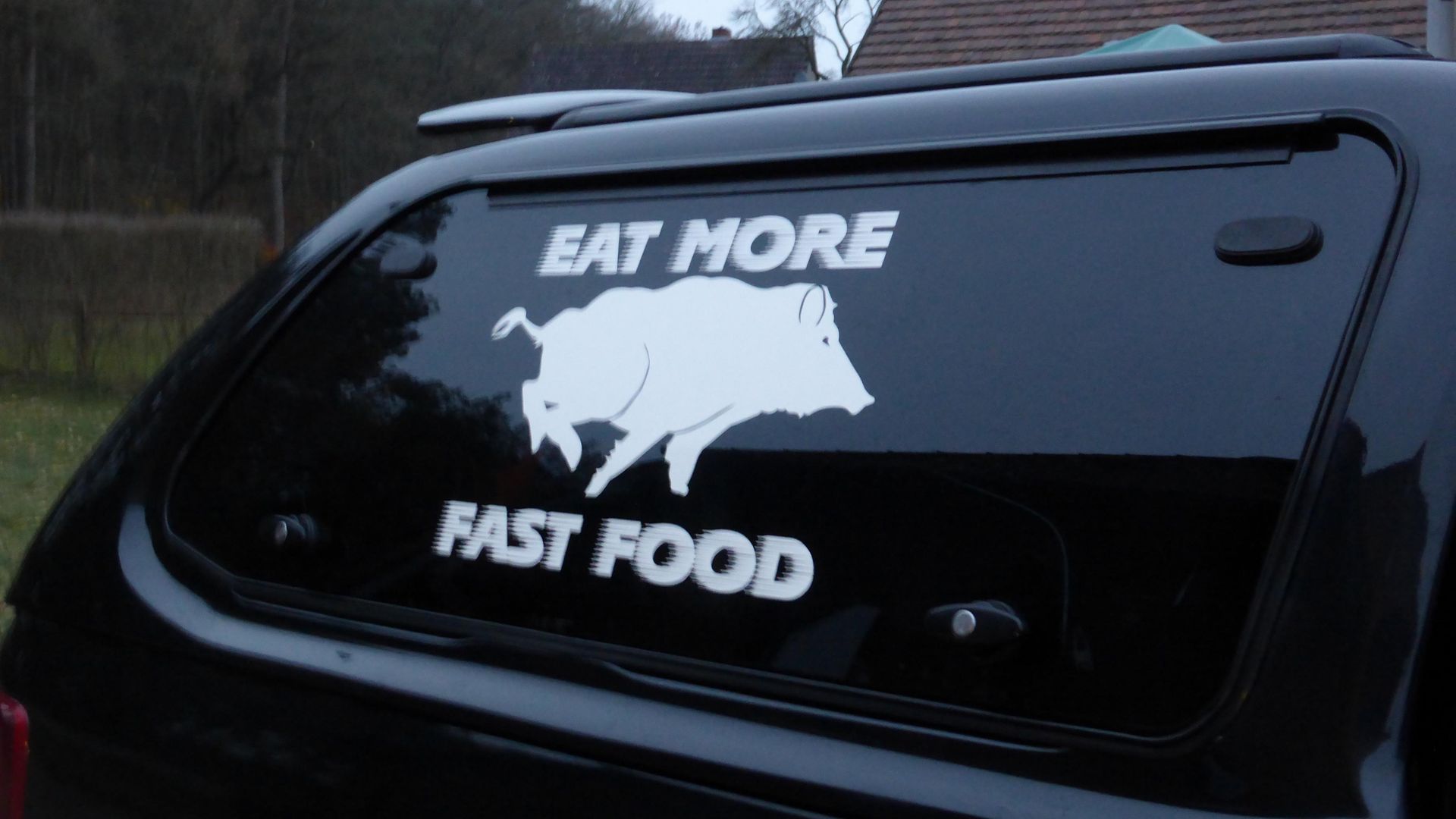 credit: Archant
credit: Archant
How to choose the right boar to shoot
Each hunting area will be governed differently, so the rules of what you can and cannot shoot must be obeyed. Mistakes happen, and are often followed by heavy fines, but the Germans I have shot with take it very seriously. If you are going to shoot on a few different areas on your trip, write it down at the start of the day, as once you are dropped in those woods, you need to remember in an instant what is on the menu!
As a rule of thumb, wherever you go, lead sows must not be shot – that is, sows with dependent or following young. An adult sow that does not have young may be shot, but you do need to take care that she does not have youngsters that you just cannot see in the long grass. Should a lactating sow be found, an extensive clean-up will begin following the hunt, with the young being tracked and shot. Even those that survive can be a nightmare, as they wreak more havoc on the countryside, having not been brought up correctly by an adult.
Although your focus may be boar, a lot of these driven hunts are important to the hunting club for their main deer cull, so they are relying on all the hunters to take deer as well as boar. You, therefore, have a judgment to make, as shooting a deer could discourage boar from your stand. Equally, shooting a red hind on a driven hunt, for instance, is a magical experience, topped by you being part of the final ceremony at the end of the day.
Roe deer tend to be the only species of deer not shot on the run, probably owing to their small size. It is also expected that youngsters are shot first. Depending on the area, foxes can sometimes be on the quarry list and, on occasion, feral racoons a priority!
Knowing the correct procedure for following up a shot is also essential. I take a pen and paper to note the species, direction of shot, distance from stand, direction of animal and reaction to shot. At the end of the day, all animals that have had a shot fired at them but are not accounted for will be followed up with a trained and registered tracking dog. If there are enough dogs on the day, you may have to wait and answer a few questions to start them off in the right place.
 credit: Archant
credit: Archant
The post-hunt ceremony
Boar shooting is steeped in tradition. The end-of-shoot gathering is a great opportunity to see what else has been shot, to listen to hunters’ sharing stories and hopefully have a few of your own. It’s always interesting to see all the animals brought in and placed in order of their ‘supremacy’, and then for a traditional horn tune to be played for each species that has been shot.
Hunters are often called up individually to be given a spruce bow that they place in their hat. My top tip is to copy the other hunters – and most importantly, never step over a carcass, as I once almost found out!
Driven boar hunting is a great experience. It is not easy to follow all the rules, especially when they are translated from another language, making them even harder to follow. There is nothing worse than not taking a shot because you are unsure, only to find out later on it would have been fine!
My final tip is to bring nibbles with you! If you are staying in a bed and breakfast, a mixture of bread, eggs and meat in a freshly baked bread roll, shoved in your pocket, will be savoured three hours into the hunt. A favourite of mine is also pistachio nuts – they keep the mind busy if the shooting is slow!